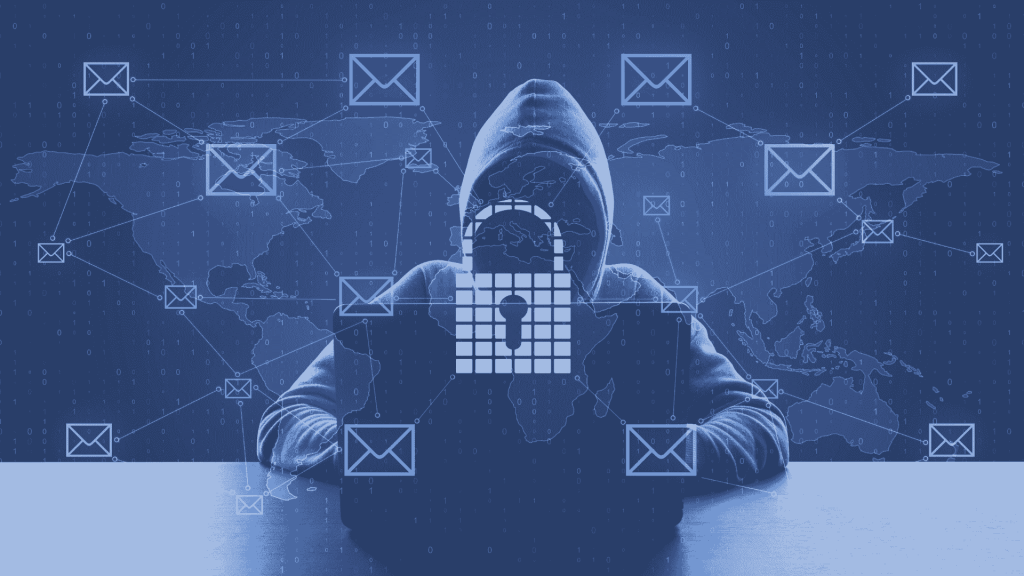Email is an essential form of communication in a digital world. With widespread use comes an increased risk of security breaches. Whether it’s personal information, confidential business data, or sensitive financial or HR information, email is a prime target for cybercriminals.
That’s why email security is so critical. Email security is essential for both personal and professional use. It protects your privacy, prevents identity theft, and safeguards sensitive information. For businesses, email security is even more critical, as a security breach can result in the loss of valuable data, reputational damage, or even financial loss.
Table of Contents
- Types of Email Security Threats
- Phishing
- Malware or viruses
- Spam
- Ransomware
- Email Bombing
- Email Spoofing
- Ways to Protect and Secure Email
- Strong Password
- Avoid Public Wi-Fi
- Encryption
- Digital Signatures
- Authentication
- Multifactor Authentication
- Active Scanning and Filtering
- Educate yourself
- Awareness
- Phishing Simulation
- Best Practices / Email Policy
- Hands-On Training
- Reinforcement
- Email backup
- Next steps
Types of Email Threats
E-mail has become a focus target for cyber-attacks. Some common attacks include:
- Phishing: Phishing is an attempt to trick people into giving out sensitive information. It’s an online scam that targets users by sending them e-mail that appears to be from a valid source. (Bank, mortgage company, mobile payment companies, partners, etc.) Typically, these e-mails contain links or attachments that are intended to steal sensitive information entered by the user. Explore ways to strengthen your online security against relentless phishing email attacks.
- Malware or viruses: Malware, short for malicious software, refers to any type of software (file or code) that is designed to damage a computer or steal information. Malware threat is typically spread via emails through infected attachments or links to malicious websites.
- Spam: Spam is unsolicited and unwanted email, often containing advertisements or promotions. Spam not only clutters up your inbox but is also used to spread malware, viruses, or phishing scams. Because sending email is very inexpensive, spam email campaigns are very common.
- Ransomware: Ransomware is a type of malware that encrypts the victim’s files and demands payment in exchange for the decryption key. Ransomware can be delivered via email through infected attachments or links to malicious websites.
- Email Bombing: Email bombing is sending a large amount of email to a single recipient in an attempt to overload their inbox and cause the email system to fail.
- Email Spoofing: Email spoofing is sending an email that appears to come from a trusted source but is actually from a different and potentially malicious sender.
Ways to Protect and Secure Email
- Strong Password: A strong password is the first line of defense against cyber-attacks. Use a combination of letters, numbers, and symbols to create a password that is difficult to guess or crack.
- Avoid Public Wi-Fi: Public Wi-Fi networks are not secure, so avoid using them to send or receive sensitive information. If you have to use them, a VPN (Virtual Private Network) can help prevent Wi-fi snooping.
- Encryption converts plain text into code to prevent unauthorized access. When email is encrypted, only the recipient with the decryption key can access the content of the message. This is often used to secure the most private email.
- Digital Signatures verify the authenticity of an email. They use a secure digital certificate to encrypt the sender’s email address and message.
- Authentication is the process of verifying the identity of the sender of an email. This helps to prevent spoofing, where an attacker sends an email that appears to come from a trusted source.
- Multifactor Authentication uses a second device to prevent unauthorized login attempts to user accounts.
Active Scanning and Filtering
Training users on email security is crucial to protect individuals and organizations from email threats.
- Educate yourself: Stay informed about the latest email security threats and educate yourself on how to protect your data.
- Awareness: It is important to raise awareness of the types of threats and the consequences of falling victim to them. This can be done through regular communication using email, training presentations, or an email policy agreement.
- Phishing Simulation: Phishing scams are one of the most common email threats. To help users recognize phishing scams, you can conduct simulation exercises and send fake phishing email to users to test them.
- Best Practices / Email Policy: Provide users with clear and concise guidelines on best practices for email security, such as not clicking on links from unknown sources, avoiding opening attachments from untrusted senders, and reporting suspicious email.Update users on new email threats and any changes to email security best practices.
- Hands-On Training: Provide hands-on training sessions where users can practice email best practices and technical controls in a controlled environment.
- Reinforcement: Constantly reinforce the importance of email security through regular reminders and awareness campaigns.
Backup
- Like all data, email should be backed up regularly. Email correspondence is a valuable business record and may need to be saved for legal or other reasons.
Next steps
Email security threats come in many forms and can cause significant harm to both individuals and organizations. Be vigilant and aware of these threats and take the necessary steps to protect yourself. Contact Advance2000 today if you need to protect your email or check our Microsoft 365 Business Email Services.
Explore more our advanced email protection and email security services that reduce business risk by making your email safe and more secure or get your Cybersecurity Risk Assessment.



